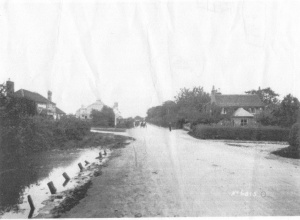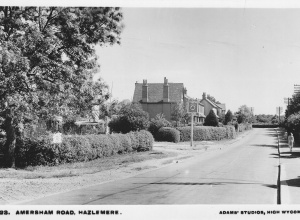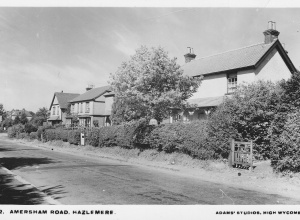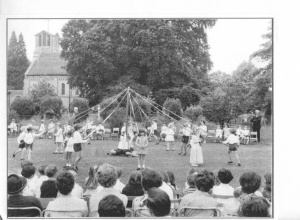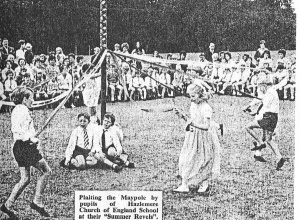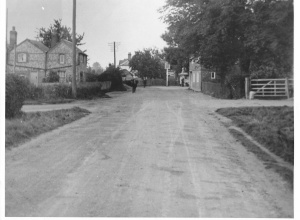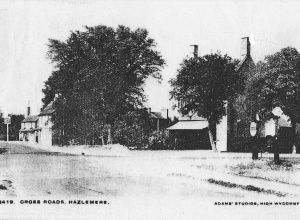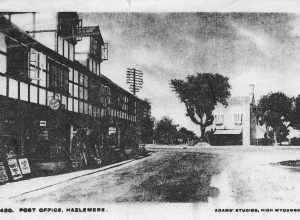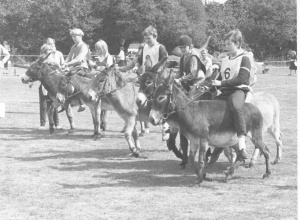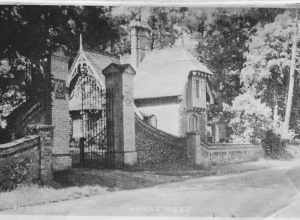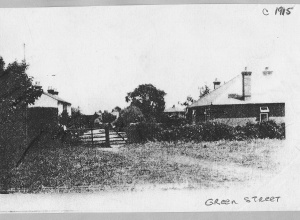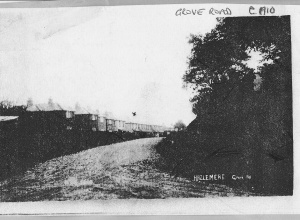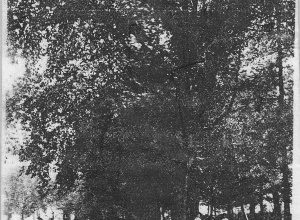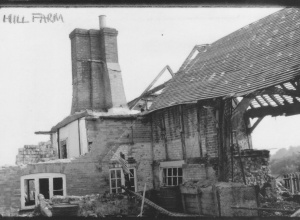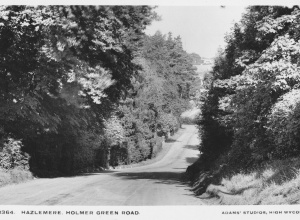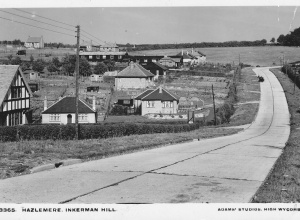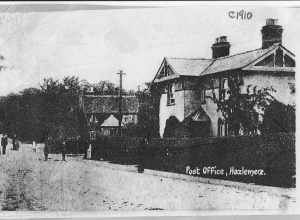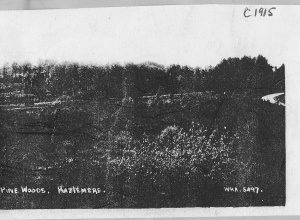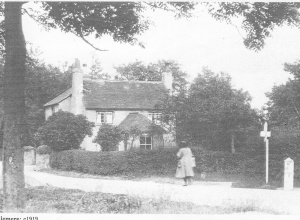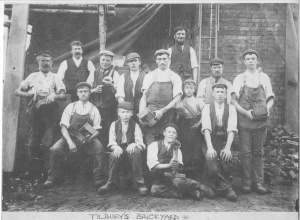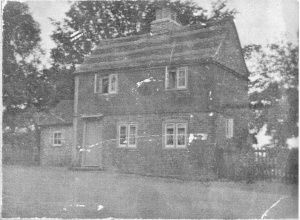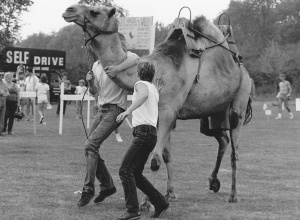Hazlemere History
"Potted History of Hazlemere" - by David Gantzel.
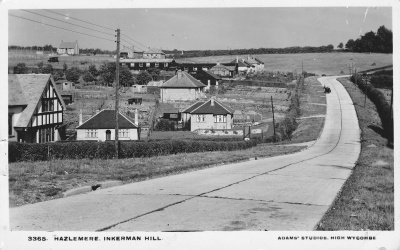
Although there is evidence of Early Man (Stone Age and Bronze Age) a small Roman presence near the Crossroads, several Saxon settlements and Norman use of the area, Hazlemere remained sparsely populated until the 19C as part of an area known as Wycombe Heath.
Between Norman times and 1845 relatively little happened. The Knights Templar were granted St John's and Kings Wood by Henry III, Hill farm (where the library now stands) was a Tudor building, as was Grange farm and Hazlemere also had a part to play in the Civil War in 1642.
Hazlemere began to lose its isolation when a turnpike road (known as the Gout track) was approved by Parliament in 1768 - from Hatfield to Reading, now the A404. This track enabled people and vehicles to reach places like High Wycombe and Amersham more easily. This led rise to a number of public houses and a few occupations like brick making start up. And it was the 'ungodliness' of these people that led to the Misses Carter to have a church built - Holy Trinity in 1845.
Now Hazlemere started to expand. By the end of the 19C small but significant development had taken place, although there were only three shops. Sports and other pastimes were becoming more popular including a Cottage Garden Club run by the Rev Charles de Haviland whose son Geoffrey became a famous aviator and designer. [There is a blue plaque on the house and a road named after him]
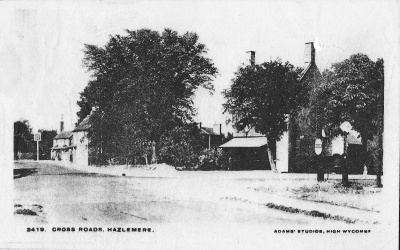
The 20C commenced with farming still the main industry and in Edwardian times Cherry orchards were planted. Brickmaking still continued at the Old Kiln and at Oakengrove. At this time Nobel prizewinner Sir William Ramsay retired to live in Hazlemere and had a big impact on local life. Down on the Park, Robert Leadbetter had a private zoo.
The First World war depleted Hazlemere of its young men, but in 1919 those returning formed the Workers Social League to improve the neglected village. It was very successful, but by the 1930's the area was losing its rural character and indiscriminate building was going up everywhere, stopped only by the outbreak of the Second World War.
Hazlemere more than played its part. The school had a Beat the U-boat campaign, the village had its own Home Guard and contributed in no small measure to the Spitfire and other funds.
After the Second World War ended, Hazlemere was faced with many problems, not least the pressure to build ever more houses. These largely uncontrolled developments exacerbated the already complex local government boundaries and in 1952 a Residents' Association was formed to tackle this and other problems.
The 1960's and 1970's saw a relentless increase in housing. Huge developments on the Park, Brackley, Hill and Manor Farm. But no provision was made for leisure and it was through the efforts of the Residents' and the Community Association that Hazlemere got a library and a Community Centre in. 1976.
In 1969 came another threat of a huge road from Inkerman Hill to Hughenden splitting Hazlemere in half with thousands of houses to be built. (H7). This proposal was met with huge resistance and was only finally abandoned following pressure from The Grange Action Group formed in 1998. [In 2012 part of the old H7 came into public ownership].
Hazlemere finally had its own parish council in 1987. It can be credited with many achievements. The Cedar Barn and outbuildings have been transformed, new play areas for children have been provided, there are new sports facilities on the Rec and Rose Avenue, and much more.
The early 21C saw more housing on the old Equity and Law site, a new sports pavilion was erected in 2010, the Residents' Association became reinvigorated in 2009, the RC church of St Edmund Campion closed in 2012.
